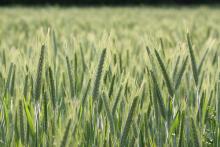More than half of the world’s grain production is used to provide feed for the animals destined for our table. Animals such as cows are taken from their pastures, shipped to feedlots and fed a high concentration of corn and other grains to fatten them up and create that marbled taste we Americans have come to love.
In the meantime, people in countries all over the world are facing food shortages, droughts and famine. Our seemingly bottomless appetite for meat is driving up the costs of grain, which is a staple for people in many countries. Of course, the mainstream media doesn’t mention this to us, because we tend to like having the wool over our eyes.
Once you become aware of the effects of food shortages, high grain prices and starvation across the world, it is difficult to close your eyes again. That next bite of grain-fed beef from the store might not be so tasty if you imagine the starving face of a child in another country whose family cannot afford to buy a sack of rice.
The answer is not necessarily to stop eating meat, but to choose your meat sources more carefully. Grass fed meats have a better concentration of fatty acids and critical nutrients, and they require no expensive grains to prepare them for eating. Not only can grass fed meat be better for the world, it is also better for your health.
